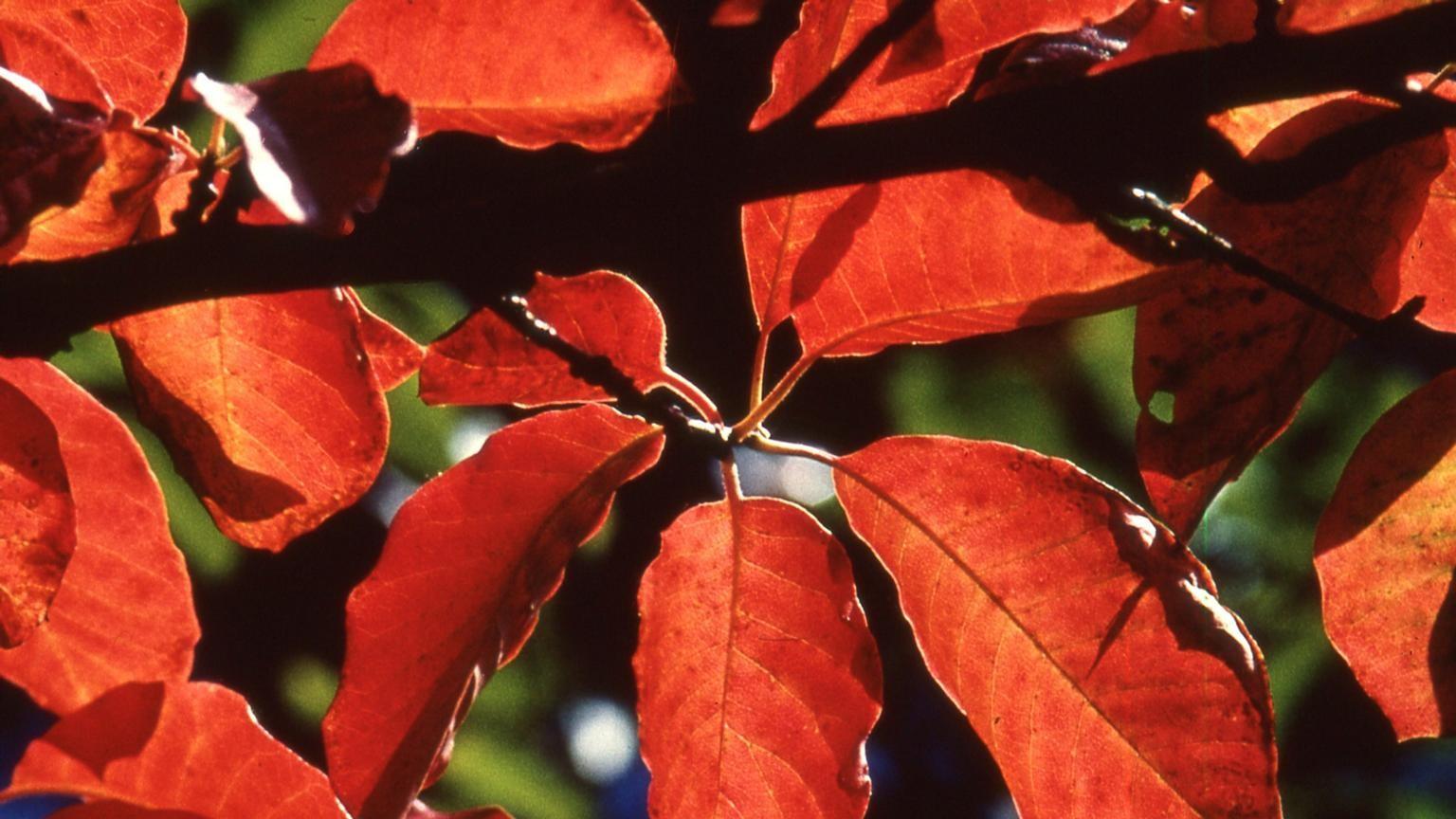About blackgum
Nyssa sylvatica
Deciduous Tree
Dogwood Family
Maryland Distribution: A canopy tree commonly found in forests of wet to average moisture.
Height: up to 90 feet
Blooms: largely dioecious, inconspicuous; April-May
Sun: full sun to shade
Soil: wet to average moisture, sandy or loamy, pH of 6.5 or less
Garden Use & Maintenance: This species is very popular as an ornamental because of the straight, single trunk, horizontal branches, glossy foliage, handsome alligator-hide bark, and red fall color. Use for specimen trees, street trees, reforestation, pollinator gardens, songbird/wildlife gardens, erosion control. Tolerates soil compaction but not pollution. Some black spot may occur on leaves, but this usually does little to affect the ornamental value. Prune in fall if desired.
Wildlife: Pollinated by natives bees and honeybees (as in tupelo honey). The fruits are consumed by songbirds, woodpeckers, wild turkeys, squirrels, foxes, and bears.
Susceptible to damage from deer and beaver.

